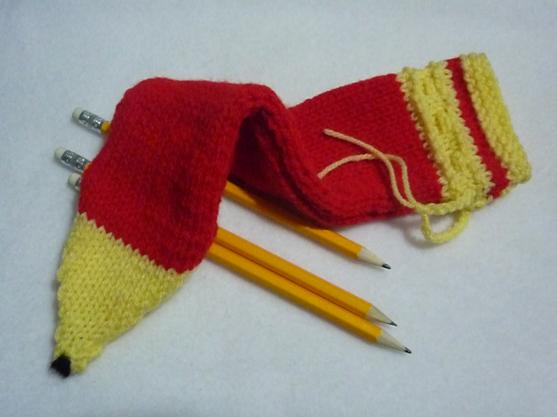
Salty Sam’s Fun Blog for Children
Number 292
The Beginning of Human Flight
Hello Everyone

Do you ever fly a kite?
Bill, Bob, Emily and Henry love flying kites.
They always want me to take them up on the cliffs around the Rocky Bay Headland but l won’t do it because if they let go of the kite string by accident, we will never see the kite again. lt is much better to fly a kite in the park, l think. We are much less likely to lose it there.
Adults like flying kites too. ln fact, did you know, the Chinese have been flying kites since at least 2000 BC?
ln the First World War, the army used kites that were so large they could lift a man high off the ground so that he could observe exactly where the enemy was across the battle fields.
Of course, other animals had mastered flight before man ever walked the Earth.
At the beginning of life on Earth, insects like dragonflies could fly. Then came the birds and then later in evolution came bats, which are flying mammals.
Man saw the flying animals and longed to join them in the sky. ln early history he tried to fly – unsuccessfully, jumping from high places like towers. Being high up doesn’t make you more able to fly than flying off from the ground – if you are unable to fly.
To be able to fly you need two things. You need to be able to rise up and go forward. The technical terms for these are ‘upwards lift’ and ‘thrust’.
Birds can fly because they have wings, light and streamlined bodies and powerful muscles. People are heavy and designed to walk upright on land.
Birds are living aeroplanes. They can lift up into a strong wind without any effort because of their shape.
lf you look at the shape of a wing on a bird or an aeroplane, they are basically the same. They have a curved shape.
During forward movement, air travels over the wing faster than the air underneath it. This causes pressure to be reduced above the wing and increased below the wing. This creates lift.
Different birds have different shapes of wings which helps them live different kinds of lifestyle. These different shapes of wings are also found on aeroplanes depending on what kind of jobs they are designed to do.
Short thick wings are good for twisting and turning in the air. Humming birds and planes used for acrobatic displays have these.
Narrow, pointed wings produce high speed like those on swifts and fighter jets.
Swifts can live for two or three years on the wing, constantly flying. A swift eats and even sleeps on the wing. lt lands when it wants to build a nest in which to rear its babies.
lf wings are long and wide, they are designed for soaring high in the sky. You will find these kinds of wings on eagles and passenger aircraft.
Long, narrow wings are best for long distance gliding. You will find them on sea birds that glide long distances on air currents above the sea and gliders.
Gliders, which are launched into the air behind another aeroplane, and hang gliders, are the nearest aircraft humans have produced to resemble flying squirrels and frogs.
The idea of hang gliders was thought of as early as the end of the 19th century.
Nowadays, they can have engines attached to them. These are called micro lights and are more controllable than hang gliders.
Most birds flap. The early flying machines designed by people like Leonardo de Vinci incorporated mechanisms to produce a flapping machine.
Aeroplanes don’t need to flap to take off. The most important thing is to incorporate a force strong enough to move the machine forward. This could be a propeller or a jet engine. Once you have enough forward force the wings will lift the machine.
Some of Leonardo’s machines were built in modern times as an interesting experiment. Some worked better than others.
Lots of early inventions might seem silly to us today when we have machines that work well, but when you have to invent something from scratch, it can take a lot of trial and error to understand what will work and what won’t.
lt is necessary to have those early trials. Then things are developed, sometimes by other scientists or engineers. Through time they are improved and improved – and people are always looking for new ways to do things better. Last week l was telling you about space. Men and women are capable of going into space nowadays but the beginning of human flight had to start somewhere.
Today, we want to produce aeroplanes that are faster or safer or cheaper to run or cause less pollution.
ln 1780, in Paris, the Montgolfier Brothers tried an experiment where they tried to lift a paper balloon up by filling it with hot air. Hot air rises – and it lifted the balloon into the air.
They were thrilled, and decided to make a balloon big enough to carry people. But they thought it would be too risky to go up themselves and so they slung a basket under the balloon and put a sheep, a chicken and a duck inside it.
lt successfully flew for 3km and landed safely.
Human flight had begun. Lots of people wanted to fly in hot-air balloons and look down at the world from the sky. Two men even successfully crossed the English Channel.
But the trouble with balloons is that they have limited control. You have to go in the direction of the wind and that is great for a fun trip but no good if you need to get to a particular place in a hurry! Nowadays, hot-air ballooning is more of a fun hobby – more about that next week.
ln 1903, after five years of development, the Wright brothers successfully flew a fixed wing aeroplane – it flew just a few metres but it was a sensational achievement.
The brothers were bicycle builders and they had an idea to construct a plane with a very light frame, an engine and propellers and bicycle chains.
lt worked.
lt had a rudder at the back to help the plane change direction. Birds do this using their flexible, feather covered tails.
A lot of aircraft development mirrors things we find in nature.
The jet engine creates forward thrust in a similar way that a squid propels itself by sucking water in and then squirting it out behind itself.
A bat uses its radar facility to find its way in the dark and thick clouds – and so does an aeroplane.
The fact that some creatures can fly is a mystery.
Ladybirds and bees fly in a way that seems to defy all known laws of physics and engineering. They move their wings in a certain way in order to create lift and this can only be observed using slow-motion filming.
lt seems that there is always something new to learn.
Bye bye everyone – don’t forget to subscribe to my blog!
lf you like my blog, please support it by telling all your friends and followers about it.
Thank you!
And see you again next Fun Friday!
Love and kisses
Salty Sam

www.christina-sinclair.com


Bill and Bob’s Joke of the Week![]()
![]()
Bob: How did the rocket lose his job?
Bill: l don’t know. How did the rocket lose his job?
Bob: He was fired!

Salty Sam © Christina Sinclair 2015
Unauthorized use and/or duplication of material from this blog without express and written permission from this blog’s author and owner is strictly prohibited.
Links may be used to www.christina-sinclair.com

Picture Gallery
 Leonardo’s idea for a flying machine
Leonardo’s idea for a flying machine
 The Montgolfier Brothers
The Montgolfier Brothers
And their enormous, decorated balloon
 The Wright Brothers
The Wright Brothers
 They made their aeroplane as light as possible
They made their aeroplane as light as possible
 Gliders have long, thin wings
Gliders have long, thin wings
They need an aeroplane to get them airborne – they do not have an engine
(Daily Mail)


 THE SALTY SAM NEWS DESK
THE SALTY SAM NEWS DESK

Have you gone back to school after your summer holidays now?
When Bill and Bob went back to school they were very excited.
What new adventures in learning would they encounter?
They rushed to get back to their desks and were keen to
- Hit the books
- Become bookworms again
- Become teacher’s pets
- Brainstorm all their projects
- And pass all their tests with flying colours
Do you know what all these idioms mean?

When Miss Pringle walked into the classroom again the class cheered. They were glad to see her.
Miss Pringle started the year by giving out the new exercise books, crayons and pencils the children would need.
She told them that she would give them some advice about looking after their new pencils.
She told them not to keep dropping them on the floor because this can break the leads inside. This is especially true of colouring pencils which tend to have softer leads.
She said that they could intensify the colours when they used them by using small circular movements instead of long lines.
They could also use what is called a cross-hatching technique. This means laying lines of colour in a slightly different direction to create a woven effect.
They could mix colours together and grade the colours by leaning more lightly or more heavily on the pencils.
Of course then the children wanted to draw a picture to try their new colouring pencils and techniques out.
Miss Pringle said that they should write an essay about what they did in their summer holidays first and then they could draw a picture to illustrate their story.
Bill and Bob wrote about going to the beach and walking in the woods and playing in Auntie Alice’s garden. They also wrote about all the books they had read and television programmes they watched and games they had played.
Henry wrote about stargazing in his playroom.

Roger wrote a story about how he had gone to the Moon for a week’s holiday.
Miss Pringle, funnily enough, did not believe him. But it was a funny, well-written and imaginative story, so she just smiled and gave him quite a good mark anyway.
Roger loves to think of himself as the class wit.

*********************
TO ADVERTISE ON THIS BLOG
PLEASE CONTACT:
christina.sinclair.ads@aol.co.uk
*********************


Quick Quiz
Draw a grid four squares across and thirteen down then write words across in the squares to make a phrase that reads downwards.
- lnsects that make honey
- You want to have this as good not bad
- The opposite to beautiful
- _ _ _ _ and flows
- Something that twinkles in the sky
- The opposite to odd
- Animals that like to copy
- The Mediaeval Era was also called the Middle _ _ _ _
- A food that you can eat after you have cracked their shells
- The opposite to shiny
- A garment worn on the foot
- You need these to open your locks
- The noise that a little dog makes




lt’s the Weekend!

HOW TO MAKE A PENClL PENClL CASE
This is the perfect pencil case for when you start school.
It is washable.
Put the pencils into the case with the points upwards so that they don’t poke through the knitting.
PENCIL CASE (KNIT TWO)
Using 4mm knitting needles and yellow dk yarn cast on 17 stitches
Knit 4 rows of garter stitch
Change to red dk yarn (don’t cut off the yellow)
Knit 1 row
Purl 1 row
Change to yellow (don’t cut off the red)
Knit 1 row
Purl 1 row
Purl 1 row
Purl 1 row
Knit 1 row
Purl 1 row
Purl 1 row
Purl 1 row
Change to red
Knit 60 rows in garter stitch
Change to yellow
Knit 1 row
Purl 1 row
Continue working in stocking stitch and decrease 1 stitch at the beginning of each row until 1 stitch remains
Cast off
TO MAKE UP
Sew down the side seams right sides together
Sew some black yarn into the tip of the pencil
Crochet 50 chains into a length of yellow yarn and thread into the channel at the top of the pencil to make a cord and tie the ends together

Please note that the material on this blog is for personal use and for use in classrooms only.
It is a copyright infringement and, therefore, illegal under international law to sell items made with these patterns.
Use of the toys and projects is at your own risk.
©Christina Sinclair Designs 2015

Answers to the News Desk Quiz
- Hit the books – begin to study hard
- Become bookworms again – love to read a lot
- Become teacher’s pets – be their teacher’s favourite pupils
- Brainstorm all their projects – think carefully to create wonderful new ideas
- And pass all their tests with flying colours – get good marks



Quick Quiz Answers
- Bees
- Luck
- Ugly
- Ebbs
- Star
- Even
- Apes
- Ages
- Nuts
- Dull
- Sock
- Keys
- Yaps




I’m extremely impressed with your writing skills as well as with the layout on your blog. keep up the nice quality writing, it is rare to see a nice blog like this one today..
Thank you very much!